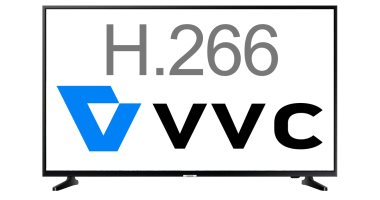What is VVC (Versatile Video Coding)?
In this article, we will discuss everything you need to know about VVC (Versatile Video Coding), the benefits of streaming using the VVC codec, and talk about its current role in the streaming field. online videos. Find out below!
What is VVC (Versatile Video Coding)?

Versatile Video Coding is a new video compression standard, also known as VVC/H.266. The VVC codec is a block (block) based codec, making it very complex but full of possibilities.
This standard was created by the Joint Video Experts Team (JVET) at ITU. This team has created a next-generation codec that powers the future of video streaming.
JVET started working on the VVC codec in the fall of 2017 and completed the final standard in July 2020. Although VVC has been around for almost a year, it is not yet widely used. Versatile video coding is technically complex, and most standard streaming hardware is still not equipped to use this codec.
VVC was created to partner with the development of technology for everything from 4K streaming to 16K streaming. 4K streaming is the best quality most current technologies can handle at this point. Some streaming technologies are capable of 5K streaming, and some cameras can record video in 6K format. 16K streaming is definitely just a futuristic vision at this point.
It's also important to note that there is some uncertainty about VVC codec licensing. At this point, it is not clear how a company should proceed with incorporating VVC into its program.
Uses of VVC
Generally, the VVC codec is used to encode video. However, it has several other specific use cases, including video conferencing and OTT streaming. The main purpose is to do these types of streaming in 4K resolution.
Video conferencing and OTT streaming are more important than ever, especially with the massive cultural shifts we've seen in recent times in response to the COVID-19 pandemic. To prevent the spread of the virus, business, education and many other daily activities must move online. The trend of OTT streaming shows that watching shows and movies on smart TVs through OTT broadcasting is also becoming more popular at this time.
VVC can also be used for 360 streaming, something revolutionary. 360 streaming, also known as live video streaming, offers a lifelike viewing experience. This type of streaming is becoming more popular in the business as it makes it possible to connect with your audience on a whole new level.
The benefits of streaming with VVC

The main benefit of streaming using the VVC codec is the ability to stream in 4K. However, it's not exclusive to 4K streaming. As the name suggests, the VVC codec is very versatile. It can support everything from ultra-low to ultra-high resolution video.
Another major benefit of VVC encoding is that it has significantly more efficient data compression than other leading codecs. That's what helps VVC handle such large files.
It is also suggested that VVC encoding can provide benefits beyond streaming video. Specifically, comments on the potential value of VVC to the online gaming industry were made. VVC can speed up gameplay, making collaborative play more efficient.
Is VVC a standard codec?
VVC is not yet a standard codec for streaming video. In fact, it's not even compatible with many of the major streaming platforms and other technologies at this point.
Some industry leaders predict that VVC will eventually become the standard video streaming codec, as it offers support that other codecs don't, but that will take a few more years. VVC may not become the standard until other video streaming technology catches up with it.
 What is Nvidia DLSS? What is the effect?
What is Nvidia DLSS? What is the effect? What are DMG files? How to open and convert DMG files to ISO on your computer
What are DMG files? How to open and convert DMG files to ISO on your computer What are MIDI files? The essence and working mechanism of MIDI in the studio
What are MIDI files? The essence and working mechanism of MIDI in the studio What is a .BAT file? How to create and use BAT files on Windows computers
What is a .BAT file? How to create and use BAT files on Windows computers What is the AAB (Android App Bundle) format?
What is the AAB (Android App Bundle) format? What are CDR files? How to open and convert CDR files to AI, PDF, PSD
What are CDR files? How to open and convert CDR files to AI, PDF, PSD